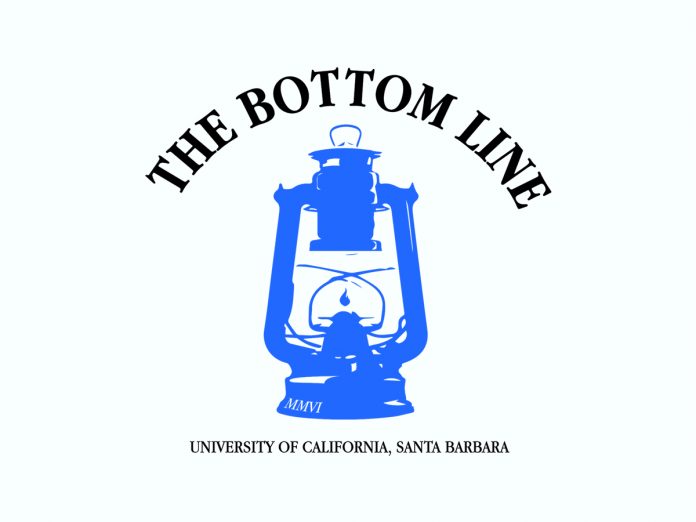Gilberto Flores
Staff Writer
Long before the 24-hour news cycle, the Internet, and Weekend Update, Americans got their news in movie theaters around the country. Last Wednesday, Jan. 22, students, faculty, and community members were treated to a special informative screening of preserved 35mm newsreels at Pollock Theater in a presentation entitled “Screening History,” presented by University of California, Santa Barbara’s Carsey-Wolf Center. The screening of the preserved newsreels, from the ’30s up until the early ’60s, gave the audience a unique opportunity to view news the way Americans of the past did.
Before the rise of television news networks and programs, people viewed the news via newsreels produced and distributed mostly by Hollywood studios. These studios would go out and shoot historical events and condense them into several-minute-long newsreels to be presented in movie houses around the country. Before the rise of television news, millions of Americans would watch history unfold each week in movie theaters showing Paramount, Hearst Metrotone, Warner-Pathé, Fox Movietone, and other local, national, and international newsreels like “The March of Time” and “Paramount News.” This was the norm during the half-century between the 1910s and the 1960s. Of course there was radio and newspapers, which would serve as the initial way that people learned the news, but newsreels served as a way for audiences to actually view the moving images that were making headlines around the world.
In 1981, the UC Los Angeles Film and Television Archive received the Hearst Metrotone News collection as a gift from the Hearst Corporation. The collection included 27 million feet of film, of both unreleased material and theatrically released newsreels from 1914 to 1967, the end of the newsreel era. Charles Wolfe and Ross Melnick, professors at UCSB’s Film and Media Studies department, were instrumental in organizing the evening’s presentation of newsreels. They invited Jeff Bickel, a Newsreel Preservationist at the UCLA Film and Television Archive, and Mark Quigley, manager of the Archive Research and Study Center, to talk about the newsreels and provide historical context.
“YouTube and Vimeo and other online sources of cinemagraphic documents are sometimes referred to as a modern, boundless, and infinitely accessible archive,” said Wolfe. “But such resources, however powerful and imminently convenient, rarely tell us things a genuine archivist can.” The newsreels screened that evening were newsreels from the collection received by the UCLA Film and Television Archive.
As the newsreels played on, history–from the fiery 1937 demise of the Hindenburg to the 1955 resignation of Winston Churchill and ousting of Argentinian dictator Juan Perón–flashed before the audience’s eyes. Historical event after historical event flew by on Pollock’s reliably stunning projectors and screen.
The screening was followed by a Q&A with Bickel and Quigley taking questions from Wolfe, Melnick, and the audience. One topic that came up often was the inevitable deterioration that is common in film. Bickel commented on how the Hearst Corporation had stored the newsreels in New York under unknown conditions, leading them to discover that many feet of film had unfortunately been lost to deterioration.
“The early era of film stock was done on nitrocellulose film stock base, which was very flammable,” said Bickel. “That was discontinued by most of the studios by the late ’40s. Hearst continued to use it until about ‘53 or ‘54; after that they switched to a safety film stock, which was nonflammable acetate. But we found that that can also deteriorate in a different form.”
Another topic of conversation was the growing use of digital filmmaking. With the proliferation of digital, film is beginning to go the way of the LaserDisc and the VHS. Recently, Paramount announced it was going all digital and ending distribution of actual, physical film prints. Paramount, the first major studio to announce such a decision, paints a vivid picture of the future of filmmaking, and media in general. In an era of downloading and streaming, it’s easy to understand the lack of surprise that this news elicits.
“It’s of huge significance,” said Jan-Christopher Horak, director of the UCLA Film & Television Archive, in a Los Angeles Times article announcing the decision. “For 120 years, film and 35mm has been the format of choice for theatrical presentations. Now we’re seeing the end of that. I’m not shocked that it’s happened, but how quickly it has happened.” The LA Times piece goes on to suggest that the death of film may be seen by the end of the year, once other major studios follow suit.
Film preservation was a major topic of discussion, even long after the Q&A. “An appreciation for film history is key to film preservation,” says Dr. Jennifer Holt, a professor in the Film and Media Studies department. An understanding and appreciation for film history is what drew people like Bickel and Quigley to devote themselves to the preservation and research of rare film stock. It’s that same appreciation that drove Wolfe and Melnick to invite them to Pollock Theater to share their findings with our fanatic film-loving community here at UCSB.
“It was a really great effort by Chuck Wolfe and Ross Melnick to bring these resources to UCSB…and expose so many students to these treasures we have that we’re going to lose,” said Holt, referring to film’s inevitable loss to deterioration.
But thanks to the efforts of film-lovers like Bickel and Quigley, a great deal of rare film has been digitized and preserved, saving visual history for future generations to discover and enjoy.












Comments are closed.